在 Basic 指令樹中�,展開“數(shù)學函數(shù)”(Math functions) 文件夾。雙擊 Calculate 指令以將該指令插入用戶程序中。
2022-07-18 10:18:54 941
941 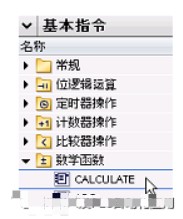
and 1.8V outputs from a 5V input. Both outputs can deliver up to 1A. With ceramic output capacitors
2015-05-07 10:59:08
SENSOR TEMPERATURE RATIOMETRIC
2023-03-29 20:05:08
SENSOR TEMP RATIOMETRIC TO92-3
2023-03-28 19:09:37
”)workbook.Workbooks.OPEN“d:\ test.xls”,, True workbook.Visible = True SCPI.CALCulate(2).Pameameter (1
2018-11-29 10:40:05
SENSOR TEMP RATIOMETRIC TO46-3
2023-03-28 19:09:20
SENSOR TEMP RATIOMETRIC SOT23-3
2023-03-28 19:06:04
SENSOR TEMP RATIOMETRIC SC70-5
2023-03-28 19:06:52
SENSOR TEMP RATIOMETRIC 20MQFN
2023-04-06 11:32:00
SENSOR TEMP RATIOMETRIC SC70
2023-03-28 19:07:51
All, Is it possible to calculate the MD5 checksum of Hex file or elf using in SPC studio,If yes
2019-02-13 08:35:55
MXR2312G - Improved, Ultra Low Noise ±2 g Dual Axis Accelerometer with Ratiometric Outputs - List of Unclassifed Manufacturers
2022-11-04 17:22:44
MXR2312M - Improved, Ultra Low Noise ±2 g Dual Axis Accelerometer with Ratiometric Outputs - List of Unclassifed Manufacturers
2022-11-04 17:22:44
MXR6999G - Low Profile, Low Power ±1.0g Dual Axis Accelerometer with Ratiometric Outputs - List of Unclassifed Manufacturers
2022-11-04 17:22:44
MXR6999M - Low Profile, Low Power ±1.0g Dual Axis Accelerometer with Ratiometric Outputs - List of Unclassifed Manufacturers
2022-11-04 17:22:44
MXR7202G - Low Cost, Low Noise ±2 g Dual Axis Accelerometer with Ratiometric Analog Outputs - List of Unclassifed Manufacturers
2022-11-04 17:22:44
MXR7202M - Low Cost, Low Noise ±2 g Dual Axis Accelerometer with Ratiometric Analog Outputs - List of Unclassifed Manufacturers
2022-11-04 17:22:44
MXR7210G - Low Cost, Low Noise ±10 g Dual Axis Accelerometer with Ratiometric Analog Outputs - List of Unclassifed Manufacturers
2022-11-04 17:22:44
MXR7210M - Low Cost, Low Noise ±10 g Dual Axis Accelerometer with Ratiometric Analog Outputs - List of Unclassifed Manufacturers
2022-11-04 17:22:44
:“:CALCulate1:??PARameter:SELect CH1_S11_1”現(xiàn)在可以這樣讀?。?/請求跟蹤數(shù)據(jù)“:CALCulate1:??DATA?SDATA”//接收跟蹤數(shù)據(jù)READ
2018-10-23 16:39:36
嗨���,我正在從PNA-X N5247A到Matlab讀取s參數(shù),到目前為止它工作正?�!�,F(xiàn)在我使用每個s參數(shù)的測量名稱來保存這樣的數(shù)據(jù):... fprintf(instrObj,'CALCulate
2018-12-11 16:18:03
SENSOR TEMP RATIOMETRIC 4UDFN
2022-11-04 17:22:44
SENSOR TEMP RATIOMETRIC SOT323-5
2022-11-04 17:22:44
描述W56192ASS63_outputs
2022-09-02 06:39:35
% OUTPUT:% - root: the root of the equation % Calculate f(xi) and f'(xi)fxi = f(xi
2010-04-25 21:02:35
[/td][td]請教ad7190的general-purpose digital outputs使用問題����,弄了幾天沒有結果,我想用P0做輸出���,程序是這樣處理的��,1. 等待 drdy為低電平2. 寫
2018-11-26 09:30:24
ADXL103的靈敏度問題�,我看到以前提的問題:Q1:“The ADXL103/ADXL203 output is ratiometric, so the output sensitivity
2018-08-15 06:47:51
“The ADXL103/ADXL203 output is ratiometric, so the output sensitivity (or scale factor) varies
2018-12-10 11:17:22
i2s_apll_calculate_fi2s計算得到真實:real rate: 47999.961I (402) I2S: DMA Malloc info, datalen=blocksize=128
2023-03-14 06:22:51
1.isl28022校準值的計算過程根據(jù)芯片手冊:(1)Calculate the full-scale current range第一步計算全量程的電流范圍,由EQ.2 = 320mv(最大電壓
2021-12-31 06:59:04
測電阻原理(本應用)2����、原理圖3、核心代碼:#ifndef _CALCULATE_H_#define _CALCULATE_H_#defineA 3.9083e-3 #defineB
2013-04-20 22:50:49
Check outputs option is turned on是什么意思����,“Check outputs”有何用
2013-08-06 23:53:49
layerhidden_outputs = self.activation_function(hidden_inputs)# calculate signals into final output
2019-03-18 21:51:33
描述The TIDA-01410 reference design uses two LMX2594 synthesizers to produce two outputs
2018-10-23 15:10:53
: 繼續(xù)pc.map_to(顏色)points = pc.calculate(depth)然后我將頂點轉(zhuǎn)換為ndarray:vtx = np.asarray(points.get_vertices
2018-10-12 11:50:22
翻譯 以下為原文I'm working with a PSoC 1 evaluation board. It has only available 2 analog outputs. More
2019-03-06 16:07:37
����。電路圖中的電阻、電容的具體參數(shù)以及作用可參考亞德諾半導體官網(wǎng)的一篇文章����,鏈接如下:https://www.analog.com/cn/analog-dialogue/articles/afe-design-considerations-rtd-ratiometric.html電路焊接后如下:..
2022-01-06 06:48:53
,m_outputs_1=output_1,)This works fine, but just one pair of data.將更多鍵添加為“m_inputs_2”、“m_outputs_2”無效
2022-12-15 07:28:28
the low cost LMC555 timer. Transformer secondaries are rectified and regulated to 5V and 15V outputs
2018-11-07 14:27:19
to know if someone had been capable to usethe complementary outputs of timer 1, I foundan example
2018-11-19 10:35:40
描述This design is an auxiliary flyback with telecom input range (36..60V) providing two outputs
2018-07-24 08:35:35
想測一下一個編解碼的糾錯性能����,需要用到Generate Bits和Calculate BER 兩個函數(shù),怎么設置才對呀����,直接連的話誤碼率一直是1,PS已經(jīng)排除是編解碼的問題��,因為直接連接產(chǎn)生比特流和計算誤碼率兩個函數(shù)誤碼率也是1求大神指點
2014-07-23 10:32:14
with loop unrolling.Compute 4 outputs at a time.** a second loop below computes the remaining 1 to 3
2016-09-22 13:05:33
μF. ) 是不是可以理解為VREF可以直接從VA引腳一過來�,中間加一個0.1 μF陶瓷電容和一個10 μF鉭電容就可以? 另:LMP90xxx also allows ratiometric
2019-05-16 10:20:53
HMC1060 是四路輸出的LDO穩(wěn)壓器 怎么篩選條件里 Number of outputs顯示是 1?
2018-07-24 08:40:15
with 3-State Output Registers and the SN74LVC244A Octal Buffer with 3-State Outputs, each used to expand
2018-09-25 10:20:21
The A1301 and A1302 are continuous-time, ratiometric, linearHall-effect sensors. They are optimized
2008-07-24 01:27:01 18
18 These ratiometric Hall-effectsensors provide a voltage output that is proportional to theapplied magnetic field. The A132X family h
2008-07-24 01:29:35 34
34 improved offset characteristics. Ratiometric, linear Hall-effect sensors provide a voltage output that is proportional to the applied magnet
2008-07-24 21:37:11 9
9 SS490 Series MRL (Miniature RatiometricLinear) sensors have a ratiometric outputvoltage, set
2008-07-24 21:42:26 31
31 which virtually eliminates the offseterrors normally associated with analog HallEffect devices.The ratiometric output vol
2008-07-24 21:43:44 19
19 ADF95 is a tool to automatically calculate numerical first derivatives for any mathematical
2008-10-08 09:29:13 11
11 Each ratiometric linear Hall-effect sensor contains a monolithic integrated circuit on a single
2008-10-09 10:54:14 15
15 The ML9372 is an organic EL cathode driver LSI with 64 outputs. Since this LSI has an output
2008-10-28 13:52:31 19
19 Abstract: This application note will show how to calculate the values needed to program
2009-04-22 10:55:57 12
12 operation in thecomplex case will calculate an Imaginary (I) and a Real (R)component. The complex filter outputs are governed b
2009-06-05 15:02:19 16
16
The AD9511 provides a multi-output clock distribution function along with an on-chip PLL core. The design emphasizes low jitter and phase noise to maximize data converter performance. Other applications with demanding phase noise and
2009-09-15 09:31:02 11
11 Abstract—An accurate analytical model is proposed in this paperto calculate the power loss
2009-11-26 11:16:52 10
10 matlab圖像處理程序:% Script file: c14_date.m%% Purpose: % To calculate
2010-02-08 11:37:04 23
23 袖珍示波器DS0201源程序,可根據(jù)源碼DIY自己的袖珍示波器�。
#ifndef __Calculate_H__#define __Calculate_H__
typedef struct
2010-02-23 10:55:12 58
58 This application note shows how to use the PIC16C774microcontroller (MCU) in a ratiometric sensing
2010-05-20 08:29:28 21
21 ABSTRACTA method for generating a symmetrical, bipolar, output swing voltage from a TITLV56xx-family digital-to-analog converter (DAC) by using a bipolar operational amplifier(op amp), TLE2142, is presented. The resulting outpu
2010-06-08 10:14:00 8
8 ) compensation values for different environmental conditions, and step-by-step instruction on how to calculate the compensation f
2010-07-06 22:46:37 6
6 The open-collector outputs require pullup resistors to perform correctly. These outputs can be connected to other open-collector outputs
2010-07-11 15:24:17 8
8 The SN74ALS35A contains six independent noninverters with open-collector outputs. They perform
2010-07-16 16:59:39 7
7 These devices contain four independent 2-input NAND buffer gates with open-collector outputs
2010-08-05 18:18:58 16
16 This application note gives the equations to calculate the power stage of a boost converter built
2010-11-03 21:56:27 14
14 and system power selector logic, offering low component count for space-constrained multi-chemistry battery charging applications. Ratiometric c
2010-11-09 14:00:13 5
5 Ratiometric Design Overcomes the 25% Tolerance of a Digital Potentiometer
2008-10-01 00:24:45 640
640 
Ratiometric Design Overcomes the 25% Tolerance of a Digital PotentiometerRatiometric Design
2008-10-01 12:06:00 1046
1046 How to Calculate the Wiper Voltage of a Digital Potentiometer
How to Calculate the Wiper Voltage of a Digital Potentiometer
2008-10-01 12:08:38 882
882 
Abstract: The MAX5481/MAX5483 data sheet provides a complicated formula for calculating wiper voltage in an effort to be very precise. This application note explains the issues involved in this calculation and breaks the process into small
2009-04-20 11:44:31 752
752 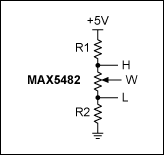
Abstract: This application note explains how to eliminate the voltage change when a digital potentiometer is used as a voltage-divider in series with other resistors.
IntroductionMechanical and electronic digit
2009-04-20 11:53:46 597
597 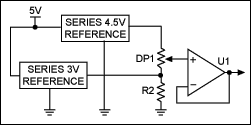
that is ratiometric to the power supply voltage for resistive transducer applications. Applications utilizing sensing elements with high tem
2009-04-20 15:56:40 1167
1167 
PWM Output
2009-04-20 16:04:55 1260
1260 
configurations. The note describes the differences between open-drain, push-pull, and bi-directional outputs. Maxim offers supervis
2009-04-23 09:14:28 1247
1247 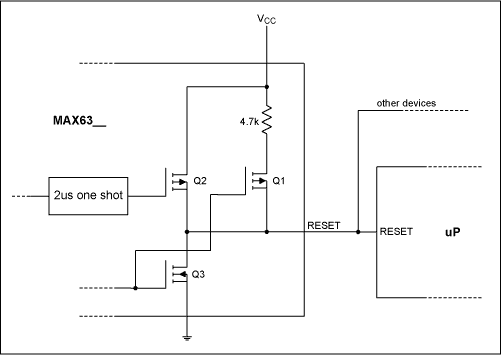
Abstract: The DS1802 is a dual audio taper-potentiometer with logarithmic resistive characteristics over the device range. Each potentiometer provides 65 wiper positions with a 1dB increment per step and device mute with at least 90dB of a
2009-05-05 11:06:15 1714
1714 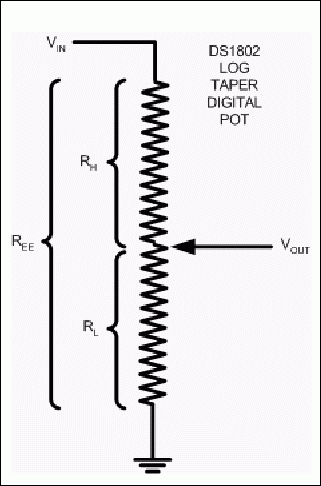
Abstract: When does the input voltage range of a low power/low voltage op amp become important? What operational amplifier should you choose when designing a battery powered handheld system? To optimize performance in tod
2009-05-07 09:16:00 2263
2263 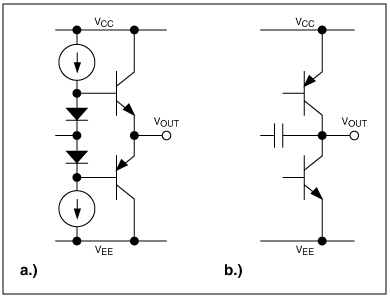
a thermistor connected in a half-bridge configuration. The goal is to perform a ratiometric measurement such that the VREF source voltage to
2009-05-08 09:03:05 2081
2081 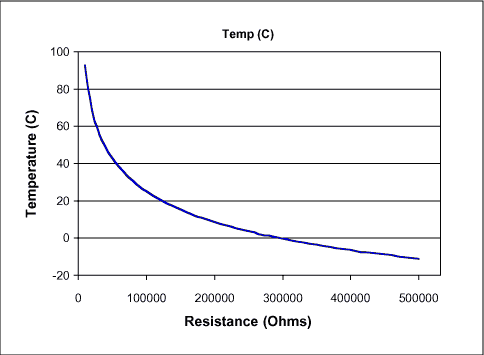
I would like to calculate the trace width to impedance
Problem I am working on a four layer
2009-12-29 09:21:18 688
688 devices as well as how to calculate a signature for non-volatile memory with the TI ARM? Code Gen Tools linker.
2016-11-09 15:22:30 0
0 voltage is ratiometric to the supply voltage and proportional to the magnetic flux density
2017-09-22 10:40:19 15
15 The SS490 Series MRL (Miniature Ratiometric Linear) sensors are small, versatile linear Hall effect
2017-09-22 11:53:38 4
4 1.使用簡單指令創(chuàng)建復雜等式 在 Basic 指令樹中���,展開“數(shù)學函數(shù)”(Math functions) 文件夾���。雙擊 Calculate 指令以將該指令插入用戶程序中�����。 未組態(tài)
2021-01-19 09:31:00 2689
2689 AD9513: 800 MHz Clock Distribution IC, Dividers, Delay Adjust, Three Outputs Data Sheet
2021-01-28 10:00:10 9
9 AD9511: 1.2 GHz Clock Distribution IC, PLL Core, Dividers, Delay Adjust, Five Outputs Data Sheet
2021-01-28 10:06:10 3
3 ADP5072: 1 A/0.6 A DC to DC Switching Regulator with Independent Positive and Negative Outputs Data Sheet
2021-01-28 11:17:14 1
1 AD9512: 1.2 GHz Clock Distribution IC, 1.6 GHz Inputs, Dividers, Delay Adjust, Five Outputs Data Sheet
2021-01-28 15:32:30 2
2 1.isl28022校準值的計算過程根據(jù)芯片手冊:(1)Calculate the full-scale current range第一步計算全量程的電流范圍���,由EQ.2 = 320mv(最大電壓
2022-01-10 14:56:33 6
6 HD151015 數(shù)據(jù)表 (9 bit Level Shifter/Transceiver With 3 State Outputs)
2023-03-29 19:50:36 0
0 HD151015 數(shù)據(jù)表 (9 bit Level Shifter/Transceiver With 3 State Outputs)
2023-03-29 19:50:48 0
0 HD151015 數(shù)據(jù)表 (9 bit Level Shifter/Transceiver With 3 State Outputs)
2023-07-12 19:57:35 0
0 HD151015 數(shù)據(jù)表 (9 bit Level Shifter/Transceiver With 3 State Outputs)
2023-07-12 19:57:45 0
0
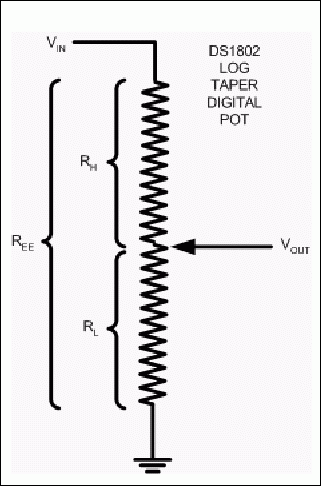
 電子發(fā)燒友App
電子發(fā)燒友App































評論